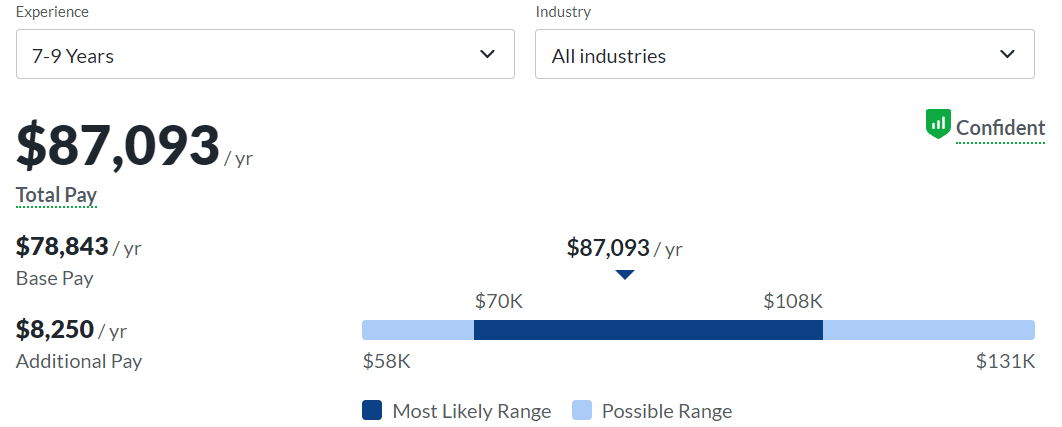Systems administrators play a crucial role in maintaining and managing the IT infrastructure of organizations across a multitude of industries. But aspiring systems administrators often encounter a common hurdle: the abundance of skills needed. Moreover, they have to be up to date with new technologies and resources, all of which can make it difficult to figure out which initial steps to take.
Whether you’re just starting your journey in IT or seeking to enhance your existing skills, this guide will provide you with a clear roadmap, practical insights, and step-by-step instructions to acquire the necessary knowledge and experience to excel as a systems administrator.
What Does a Systems Administrator Do?
A systems administrator (or SysAdmin) is the backbone of an organization’s IT infrastructure. Their responsibilities include installing and maintaining hardware and software, configuring and managing servers and networks, and ensuring security.
A SysAdmin might also manage user accounts, set up backups, and recover lost data. Their work helps keep an organization’s digital operations running smoothly, and they often serve as the first line of defense when IT issues arise.
How To Become a Systems Administrator: An Eight-Step Guide
Becoming a SysAdmin is a journey that combines formal education, practical experience, and continuous learning due to the ever-evolving nature of technology.
Here’s a step-by-step guide to help you embark on a career as a systems administrator.
-
Make a Career Plan
-
Meet the Educational Requirements (and Keep Learning)
-
Develop and Hone Your Skillset
-
Learn the Essential Tools
-
Pursue a Certification (or Maybe More)
-
Gain Practical Experience
-
Pursue an Internship
-
Work Toward a SysAdmin Role
Make a Career Plan
Your career plan should outline your educational goals, potential certifications, experience-building strategies, and your desired timeline milestone achievements.
Determine which area of systems administration interests you the most, whether it be networking, security, database management, or another area. Then, identify the necessary skills and qualifications required for that domain.
Research job postings to understand the industry expectations and job requirements. You should also take advantage of networking opportunities to connect with professionals in your chosen field.
Remember, a well-drafted career plan is not rigid; it should be flexible enough to adapt to changing circumstances and opportunities that may arise along your journey.
Meet the Educational Requirements (and Keep Learning)
Most SysAdmin positions require a bachelor’s degree in computer science, information systems, or a related field. However, what’s even more important is the continuous pursuit of learning. Technology evolves rapidly, and as a systems administrator, you must stay ahead of these changes.
Regularly updating your knowledge through online courses, workshops, webinars, and industry-specific certifications, such as CompTIA Network+ or Microsoft Certified: Azure Administrator Associate is essential.
Besides, consider advanced degrees or specialized training in your areas of interest.
Develop and Hone Your Skillset
Becoming a systems administrator requires more than academic qualifications—it also demands developing a versatile skill set. Both technical knowledge and soft skills are essential to effectively manage IT infrastructures and communicate within an organization.
Technical Skills
For technical skills, proficiency in operating systems is crucial. You should be proficient with server management, network configuration, database management, and an understanding of cloud computing platforms like AWS or Azure.
Cybersecurity skills, including setting up firewalls and managing secure network access, are essential given the rising threats in today’s digital world.
Knowing programming languages like Python can also help with scripting and automation tasks.
Soft Skills
Problem-solving is at the heart of a systems administrator role. The ability to diagnose and troubleshoot issues under pressure is vital.
Communication skills are equally important, as you’ll often need to explain technical concepts to non-technical team members and assist users with their issues.
Last but not least, time management, organization, and the ability to prioritize tasks in a fast-paced environment will help run the system smoothly.
Learn the Essential Tools
Acquainting yourself with essential SysAdmin tools is critical to becoming a competent systems administrator. These tools aid in a wide range of tasks, from network monitoring to automation and scripting.
Start by familiarizing yourself with command-line interfaces (CLIs) such as Bash or PowerShell for direct, scriptable control of the system. You should also be comfortable with networking tools like Wireshark for network troubleshooting and analysis.
Experience with virtualization platforms, such as VMware or Hyper-V, is also necessary for managing virtual servers and environments. It’s also important to understand system and network monitoring tools like Nagios and configuration management tools such as Ansible or Puppet.
Pursue a Certification (or Maybe More)
Certifications demonstrate your dedication to continual learning and show employers you have the competencies they seek. Start with foundational certifications like CompTIA A+ for basic IT skills or Network+. As you gain experience, consider more advanced certifications such as Microsoft Certified: Azure Administrator Associate for cloud systems. If security is your interest, CompTIA Security+ or the Springboard Cybersecurity Bootcamp are worthwhile options.
Gain Practical Experience
Applying your knowledge to real-world scenarios will truly develop your skills and make you job-ready. Here’s how to make that happen.
Work on a Project
Practical projects provide a fantastic opportunity to test and improve your skills. This could mean contributing to an open-source project, where you could work on systems administration tasks, or initiating your own project, creating and managing a server environment.
Not only will this help solidify your understanding of the technologies involved, but it also shows initiative and practical experience, which are attractive to employers.
Consider Creating a Home Lab
You can set up your own servers, networks, and test environments using virtual machines or old hardware. Experiment with different operating systems, network configurations, and security setups.
This “playground” allows you to learn and make mistakes in a safe, controlled environment without the risks associated with a live business network.
Consider Related Volunteer Work
Volunteering in related roles is another way to gain valuable hands-on experience. This might involve helping a local non-profit or a small business manage their IT systems or organizing tech-related events in your community.
Besides offering practical experience, such roles can help you develop soft skills like teamwork and communication, while also expanding your professional network.
Pursue an Internship
Internships often offer the opportunity to work under seasoned professionals, learn from their expertise, and understand the dynamics of working in a real-world IT infrastructure.
Whether it’s a summer internship or a part-time role while studying, this hands-on experience can be invaluable. It allows you to apply the theoretical knowledge and skills you’ve learned in a practical, professional setting.
Work Toward a SysAdmin Role
Working toward a SysAdmin role is the final hurdle in your journey to becoming a systems administrator. This step involves leveraging your education, certifications, skills, and experience to secure your desired role and grow within it.
Start With Entry-Level Positions
Begin with entry-level roles in IT support or network administration, which often serve as stepping stones to a SysAdmin position. These roles allow you to gain practical experience, understand the organization’s IT infrastructure, and showcase your abilities.
Over time, with proven skills and increased responsibilities, you can move up the ladder to a SysAdmin role. Remember, every organization values an employee who knows their system inside out, so your experience in these positions can give you a significant advantage.
Build a Strong, Keyword-Optimized Resume
Your resume is the first impression you make on potential employers. Highlight your education, certifications, analytical skills, interpersonal skills, and relevant projects or experience.
Keep it concise and to the point while incorporating keywords from the job description. These can help get your resume past applicant tracking systems and catch the eye of hiring managers.
Prepare for the Interviews
The interview is where you get to personally showcase your knowledge, skills, and potential. Anticipate common interview questions and practice your responses. Be ready to discuss specific instances where you’ve solved technical issues or improved a system’s efficiency.
And remember, interviewers aren’t just interested in your technical abilities—they’re also looking at your problem-solving skills, ability to work under pressure, and how well you fit into their team.
Get To Know Other Software Engineering Students
Pritisha Kumar
Software Engineer at Dialpad
Nadia Luna
Student at Springboard Software Engineering Bootcamp
Matthew Dillon
Front End Developer at LaunchBadge
Will AI Impact Systems Administration?
According to Gartner, by 2025, AI is predicted to take over mundane tasks in IT management, increasing efficiency and freeing time for IT professionals to focus on more strategic areas.
However, instead of replacing SysAdmins, AI will likely act as a powerful tool in their arsenal, automating repetitive tasks, predicting system issues before they occur, and providing deeper insights into system performance and security. SysAdmins must adapt by learning to work with AI tools and integrating them into their workflow, but they aren’t going to be replaced by them.
Becoming a Systems Administrator: Real-Life Examples To Learn From
Every journey to becoming a SysAdmin is unique and filled with its own set of challenges. Here are two real-life examples of individuals who navigated their paths to successful systems administration careers.
Ken Hess
In his article, Ken Hess shares five key learning points he wishes he had known about becoming a systems administrator. His journey involves the harsh reality of dealing with late nights and maintenance windows. Despite being expected to maintain regular office hours, SysAdmins are often required to work late into the night for maintenance activities. While this was a challenge, Ken suggested preparing a step-by-step list for maintenance activities and an excellent back-out plan to deal with such situations.
Ken’s journey to becoming a SysAdmin taught him to appreciate users, prioritize security, cooperate with his team during on-call rotations, and adapt to evolving hardware technologies. He encourages aspiring SysAdmins to learn as much as they can and embrace these challenges as they come along.
Gwyneth Peña-Siguenza
Gwyneth’s example of becoming an IT systems administrator without a college degree is inspiring and valuable for those interested in pursuing a similar path. Her emphasis on acquiring certifications and having the requisite experience showcases the importance of demonstrating expertise in specific areas of systems administration.
Her story serves as a testament to the fact that with dedication, relevant certifications, and hands-on experience, one can successfully pursue a career in systems administration, even without a traditional college degree.
How Much Can You Earn as a Systems Administrator?
The earning potential for systems administrators can vary significantly depending on factors like experience, education, certifications, and geographical location. Here’s a general look at what you might expect at different stages in your SysAdmin career.
Entry-Level

For those just starting out in the field, the average salary in the US is $54,570 per year.
Mid-Level

With 1-3 years of experience and perhaps a few advanced certifications, mid-level systems administrators can earn around $76,801 yearly.
Senior Level

For senior systems administrators with more than seven years of experience, those with specialized skills, and leadership roles, the average annual salary is $87,093.
What Does the Career Path of a Systems Administrator Look Like?
The career path of a systems administrator typically begins with an entry-level IT role, such as a help desk technician or junior database administrator, where you’ll gain experience solving basic hardware and software issues and learn about an organization’s IT infrastructure.
As you acquire more knowledge, certifications, and experience, you may move into a junior systems administrator position, taking on responsibilities like managing servers, handling network configurations, and improving system security.
Further experience and skills development can lead to a senior network administrator or IT manager role, overseeing the entire organization’s IT infrastructure and potentially managing a team.
FAQs on Becoming a Systems Administrator
We’ve got the answers to your most frequently asked questions.
Is Being a Systems Administrator a Good Career?
Yes, systems administration is an excellent career choice. It offers solid earning potential, a wide variety of work, opportunities for continual learning, and the ability to work in nearly any industry.
Is It Easy To Get a Systems Administrator Job?
Securing a job as a systems administrator requires the right mix of education, skills, and experience. It can be challenging for beginners due to the technical nature of the role, but entry-level IT positions can provide a stepping stone. As you gain experience and certifications, more opportunities open up.
What Is the Best Degree for Becoming a Systems Administrator?
While there are many pathways into systems administration, most professionals hold bachelor’s degrees in computer science, information technology, or a relevant field. These degrees, along with specialized courses and certifications, provide a solid knowledge foundation for a systems administration career.
Can You Become a Systems Administrator With No Experience?
While it’s technically possible, becoming a systems administrator without any experience can be challenging due to the responsibilities of the role. Most SysAdmins start in entry-level IT roles to gain practical experience. However, earning relevant certifications and demonstrating practical skills through personal projects or volunteering can help bridge the gap too.
Since you’re here…
Were you one of the tens of thousands of workers impacted by this year’s tech layoffs? Springboard wants to help. Our new Career Reboot Scholarship is intended to assist job seekers from tech looking to upskill, reskill and stand out in a competitive hiring environment. Get $1,000 off any Springboard bootcamp in software engineering, data analytics, UX design, cybersecurity, tech sales, and more. Visit this page for eligibility requirements and to apply.





![How To Become a Full Stack Developer [2023 Career Guide]](https://www.springboard.com/blog/wp-content/uploads/2021/12/how-to-become-a-full-stack-developer-2023-career-guide.jpeg)

